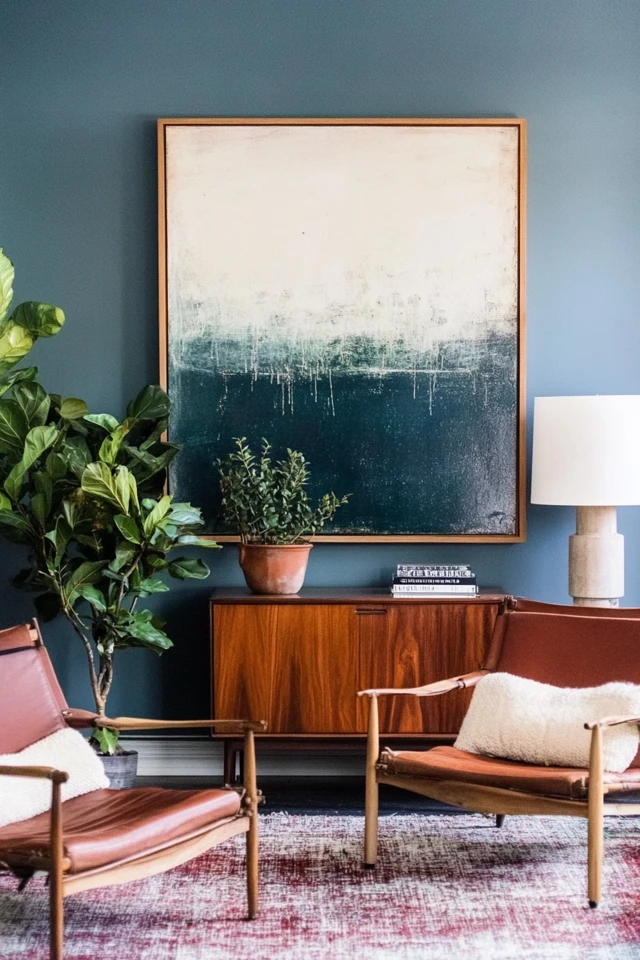Every well-designed room has one thing in common—a focal point. It’s the element that immediately catches your eye, anchors the space, and sets the tone for the rest of the design. Without it, a room can feel chaotic or disjointed, leaving guests unsure of where to look or how to take it all in.
I’ll admit, my first attempt at creating a focal point was a mess. I thought a gallery wall, a brightly patterned sofa, and a statement chandelier could all share the spotlight. Spoiler: they couldn’t. Over time, I realized the power of choosing one standout piece and designing everything else to support it. Now, creating focal points is one of my favorite parts of the design process—it’s like giving the room its own story to tell.
In this guide, I’ll show you how to identify, create, and style a focal point to bring your room into perfect harmony.
Why a Focal Point Matters
- Draws Attention: It naturally guides the eye and gives your space a sense of purpose.
- Creates Balance: A focal point anchors the room, making it feel cohesive and intentional.
- Sets the Mood: Whether it’s bold or understated, the focal point defines the room’s character.
1. Start with the Room’s Natural Features
Why It Works:
Architectural elements like fireplaces, large windows, or exposed beams make ideal focal points because they’re already built into the space.
How to Do It:
- Highlight a fireplace by painting the surrounding wall in a contrasting color or adding a decorative mantel.
- Frame large windows with beautiful curtains or install a window seat to make them pop.
- Exposed beams or brick walls can shine with proper lighting and minimal decor to let their natural beauty take center stage.
Pro Tip: If your room has no standout features, don’t worry—you can create one with decor or furniture.
2. Use Statement Furniture as the Focal Point
Why It Works:
A bold piece of furniture like a sofa, bed, or dining table naturally grabs attention and becomes the centerpiece of the room.
How to Do It:
- Choose a sofa in a vibrant color or unique texture for the living room.
- Make the bed the focal point in a bedroom by layering it with eye-catching bedding and pillows.
- Use a dramatic dining table or a set of bold chairs to anchor a dining room.
Pro Tip: Arrange the rest of the furniture to face or surround the focal point for added emphasis.
3. Incorporate Bold Artwork
Why It Works:
Artwork can instantly command attention and define the mood of a room.
How to Do It:
- Hang a large-scale piece above a sofa, bed, or mantel to create a natural focal point.
- Create a gallery wall with a mix of sizes, but ensure one piece takes the spotlight.
- Choose art with bold colors or striking imagery that reflects your personality.
Pro Tip: Place lighting above or below the artwork to enhance its impact, especially in dimly lit rooms.
4. Introduce Statement Lighting
Why It Works:
Chandeliers, pendant lights, or sculptural lamps not only provide illumination but also act as works of art.
How to Do It:
- Use an oversized chandelier in a dining room or foyer to create drama.
- Opt for a unique floor lamp or hanging pendant in a living room or bedroom.
- Choose lighting fixtures with interesting shapes, textures, or finishes to make them stand out.
Pro Tip: Keep surrounding decor minimal to let the lighting shine as the star of the room.
5. Create a Feature Wall
Why It Works:
A feature wall adds depth, texture, and visual interest to a room without overwhelming it.
How to Do It:
- Use bold wallpaper or a contrasting paint color to highlight one wall.
- Add texture with wood paneling, stone, or shiplap.
- Create a built-in shelving unit to display decor or books, turning it into an instant focal point.
Pro Tip: Keep other walls neutral to maintain focus on the feature wall.
6. Add a Rug to Ground the Space
Why It Works:
A statement rug not only defines a room’s layout but also anchors furniture around it.
How to Do It:
- Choose a rug with bold patterns or vibrant colors to draw attention.
- Use the rug to center seating arrangements, such as placing it beneath a sofa and coffee table.
- For open-plan spaces, rugs help delineate distinct areas, like the living or dining zones.
Pro Tip: Ensure the rug is proportionate to the room—too small, and it loses its impact.
7. Highlight Functional Focal Points
Why It Works:
Functional elements like a TV or a workspace can double as stylish focal points when framed thoughtfully.
How to Do It:
- Mount the TV above a fireplace or on a decorative media console. Add a gallery wall around it to blend it into the decor.
- Transform a home office desk into a focal point with a bold chair or unique desk lamp.
- Frame a piano or other large item with simple decor to keep the focus on the piece itself.
Pro Tip: Hide cords and clutter around functional focal points for a clean, polished look.
8. Bring Nature Inside
Why It Works:
Large plants or natural elements make a space feel fresh, inviting, and visually stunning.
How to Do It:
- Place a tall plant like a fiddle-leaf fig in a corner to draw the eye upward.
- Use a large vase filled with fresh flowers or branches as a dining table centerpiece.
- Create a vertical garden or plant wall for an unexpected twist.
Pro Tip: Group smaller plants at different heights for a layered, dynamic look.
9. Use Mirrors to Create Illusions
Why It Works:
Mirrors enhance light and space while acting as a decorative focal point.
How to Do It:
- Hang a large, framed mirror above a console table or mantel.
- Use a cluster of smaller mirrors to create an artistic arrangement.
- Position a mirror to reflect a window or artwork for added dimension.
Pro Tip: Go for uniquely shaped or ornately framed mirrors to elevate their visual impact.
10. Layer Textures for a Cozy Focal Point
Why It Works:
Layers of texture draw attention while creating a sense of comfort and warmth.
How to Do It:
- In a bedroom, pile on throws, cushions, and a textured headboard to make the bed the star.
- Use woven baskets, rugs, and plush armchairs in a living room for tactile appeal.
- Add texture to walls with fabric panels or upholstered accents.
Pro Tip: Stick to a cohesive color palette to prevent the textures from overwhelming the space.
Picture Gallery
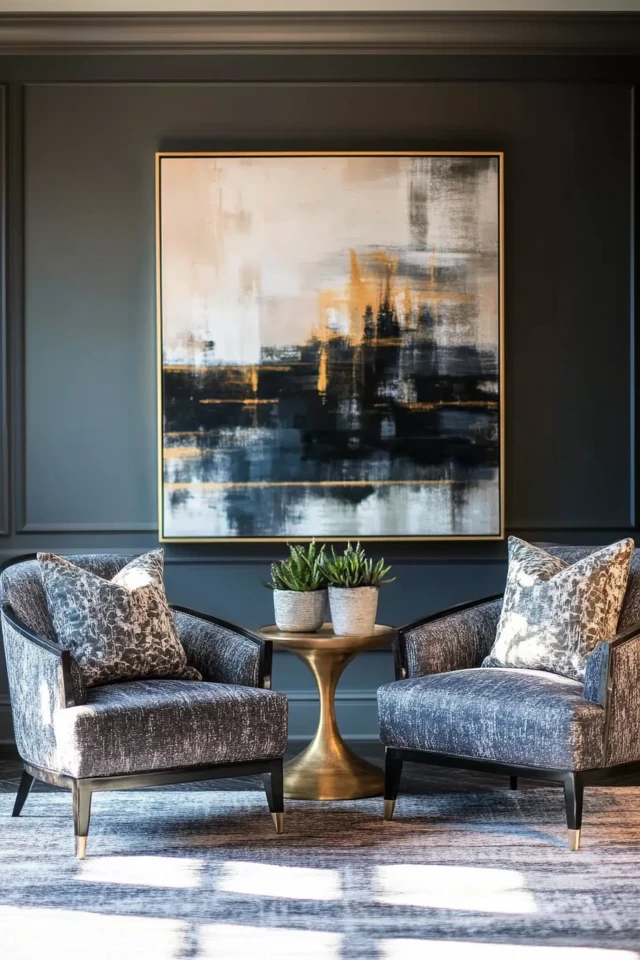
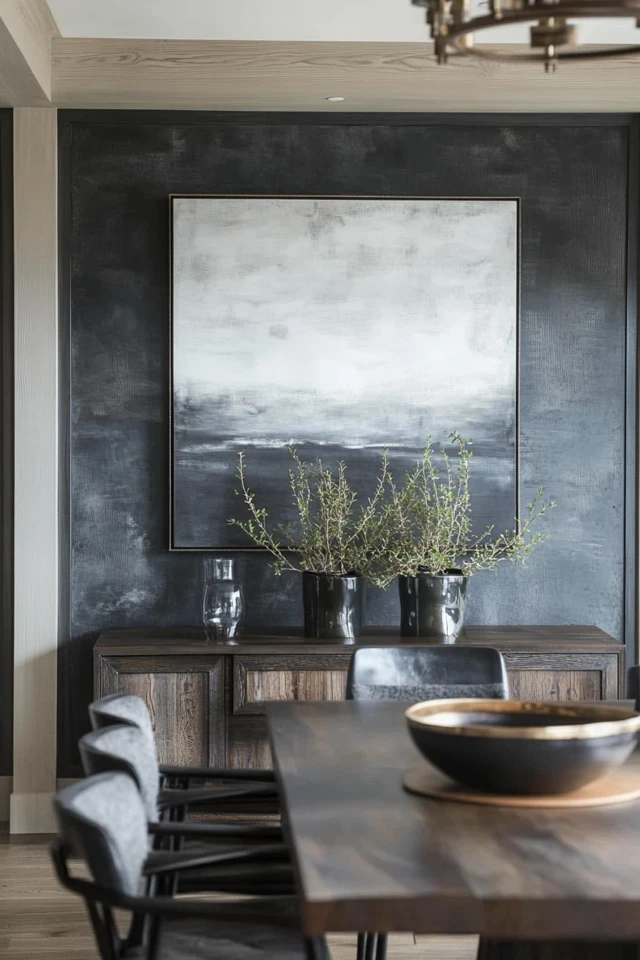
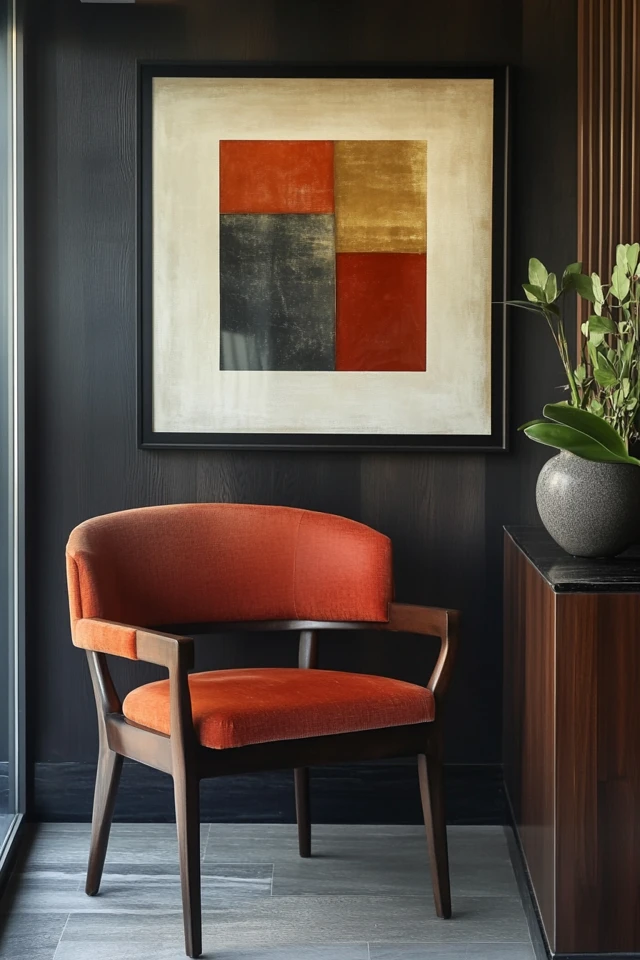
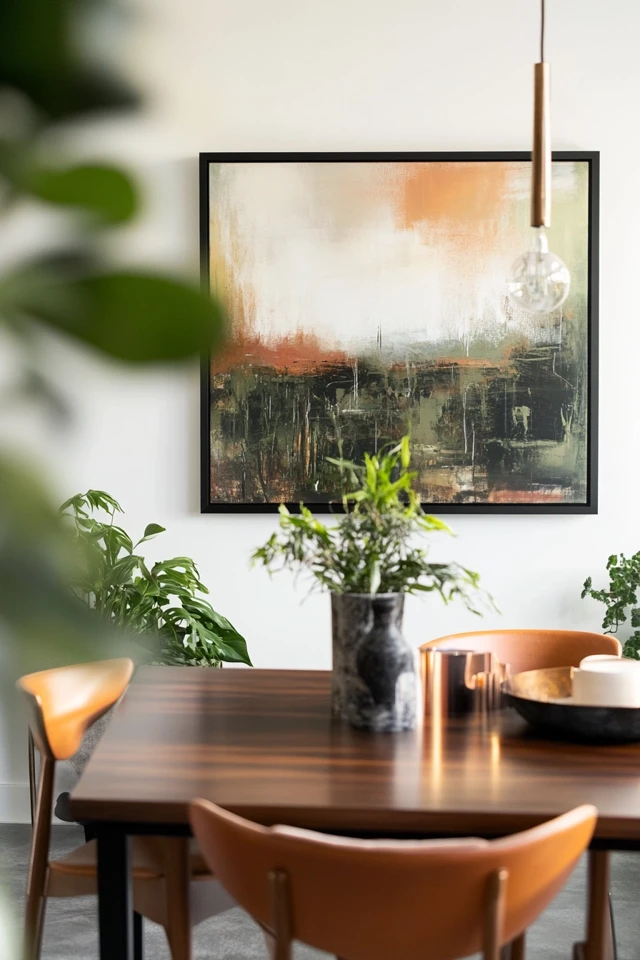
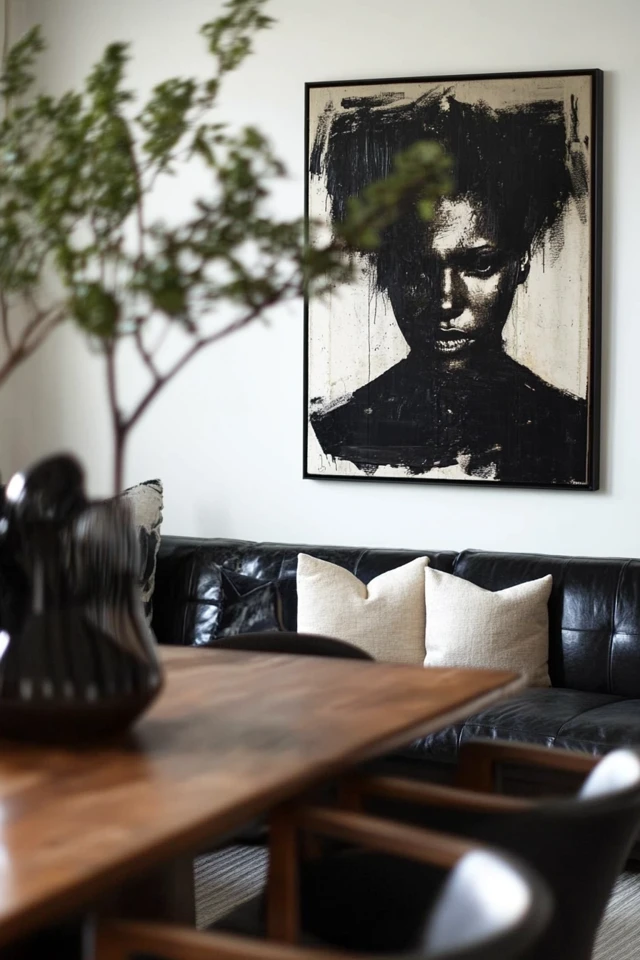
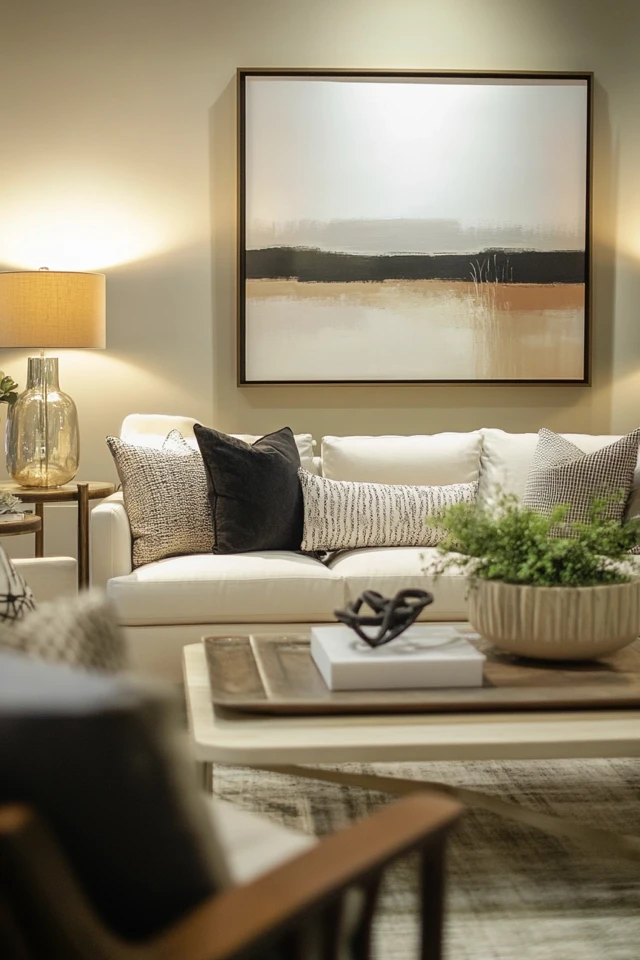
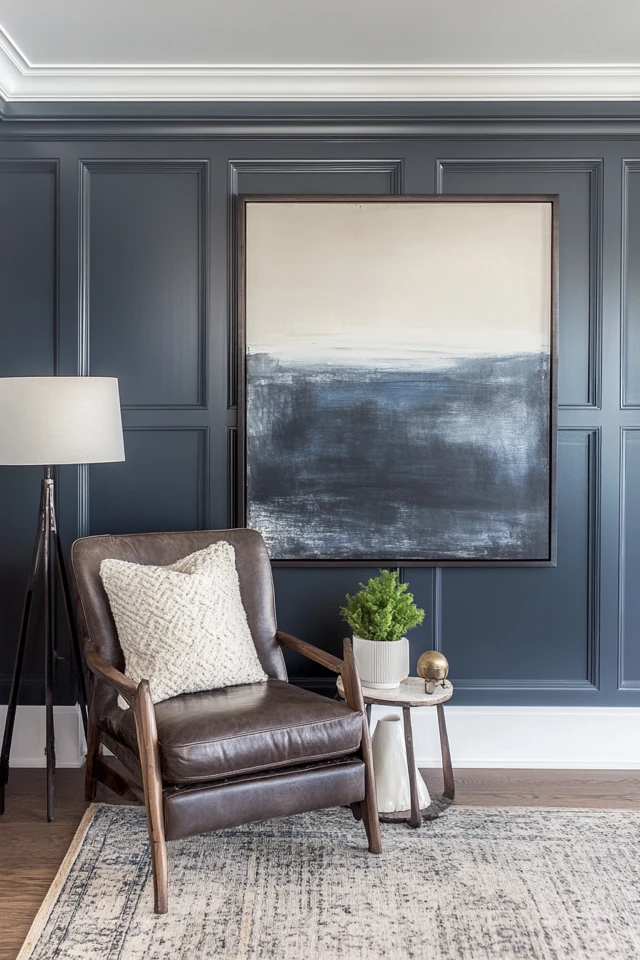
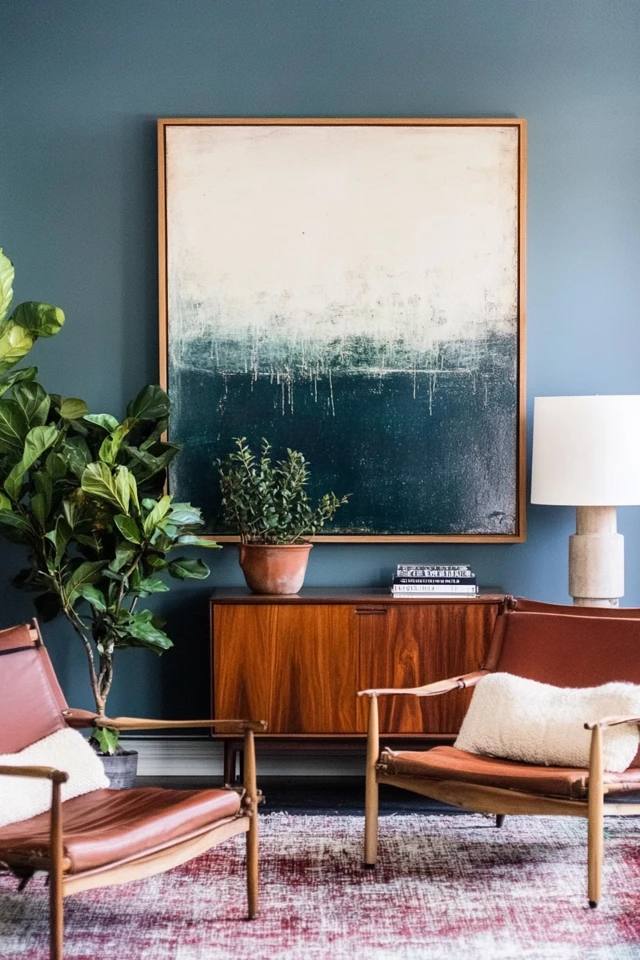
Conclusion
Creating a focal point in a room is like setting the stage for a play—it directs the eye, tells a story, and anchors the design. Whether you’re working with natural architectural features or bringing in statement furniture, lighting, or decor, the key is to choose one standout element and let everything else support it.
Remember, simplicity is your best friend. A well-chosen focal point transforms even the simplest room into a polished, harmonious space that feels complete. Start with these tips, and watch your room come to life!
FAQs
1. Can a room have more than one focal point?
Yes, but the focal points should complement each other. For example, a fireplace and a bold sofa can share the spotlight if they’re on different planes of the room.
2. How do I choose the right focal point for my room?
Consider the room’s function and natural features. In a living room, it might be a fireplace or TV. In a bedroom, it’s often the bed.
3. What if my room doesn’t have a natural focal point?
Create one! Use bold artwork, a statement rug, or a piece of statement furniture to anchor the room.
4. How do I style a small room with a focal point?
Keep the focal point proportionate to the room. A gallery wall, a striking mirror, or a patterned rug works well without overwhelming the space.
5. What’s the easiest way to refresh a focal point?
Switch out decor around it—update pillows on a statement sofa, replace artwork, or swap flowers in a vase for a seasonal refresh.

